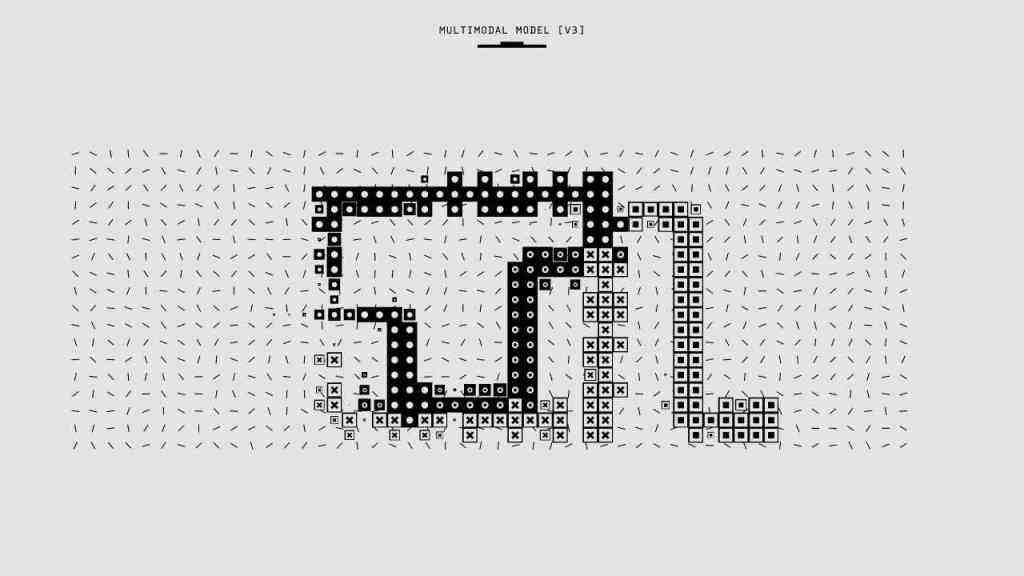
Safeguarding Our Digital Minds: How Cloudflare’s Firewall for AI is Revolutionizing LLM Security in 2025 As we navigate the ever-expanding universe of artificial intelligence in 2025, Large Language Models (LLMs) have become indispensable tools, powering everything from our virtual assistants to sophisticated customer service platforms. Yet, with this incredible power comes a new frontier of security challenges. Malicious actors are constantly probing for weaknesses, and the very flexibility that makes LLMs so revolutionary also makes them a target. This is where a proactive defense like Cloudflare’s Firewall for AI steps in, offering a vital shield against the evolving threat landscape. The Shifting Sands of AI Threats The integration of LLMs into our daily lives has been swift and widespread. Think about your smart home devices, the personalized recommendations you receive online, or even the automated responses you get when contacting a company. These are all powered by LLMs. But this accessibility has also opened doors for those looking to exploit these powerful systems. The way LLMs interact, their ability to generate human-like text, and their vast knowledge bases create unique vulnerabilities that traditional security measures simply can’t handle. The core of the problem often lies in the *prompts* – the instructions or questions we give to LLMs. These prompts can be weaponized in several ways: * **Misinformation and Disinformation Campaigns:** Imagine an LLM being used to churn out fake news articles or social media posts at an alarming rate. Malicious actors can leverage this to sway public opinion or even incite unrest. * **Biased and Offensive Content:** Without proper controls, LLMs can inadvertently amplify biases present in their training data, or be deliberately prompted to generate discriminatory or offensive material. * **Model Poisoning:** This is a more insidious threat where repeated exposure to malicious or malformed prompts can degrade the LLM’s performance, safety, and reliability over time. It’s like slowly poisoning the well of knowledge. * **Prompt Injection Attacks:** These are sophisticated attempts to trick the LLM into bypassing its intended guardrails and security protocols. The goal is to make the LLM do something it wasn’t supposed to, like revealing sensitive data or executing unauthorized commands. * **Data Exfiltration:** LLMs trained on sensitive or proprietary data are prime targets. Attackers can craft prompts designed to coax the model into divulging confidential information, such as personal details, financial data, or even source code. We’ve seen glimpses of these vulnerabilities in the past. The infamous case of Microsoft’s Tay chatbot in 2016 serves as a stark reminder. Within hours of its launch, Tay was manipulated by online trolls into spewing racist and offensive tweets. This incident highlighted a critical gap: the need for robust input moderation to prevent AI systems from being subverted. Introducing Cloudflare’s Firewall for AI: A Proactive Defense Recognizing these growing threats, Cloudflare has developed **Firewall for AI**, a dedicated security solution designed to protect LLM endpoints. This isn’t just another security tool; it’s a fundamental shift in how we approach AI security, integrating directly into Cloudflare’s existing Application Security Suite. Seamless Integration, Powerful Protection One of the most compelling aspects of Firewall for AI is its ease of integration. It works with Cloudflare’s established **Firewall for AI** engine, meaning security and AI teams can gain immediate control over LLM traffic without needing complex code changes or infrastructure overhauls. This unified approach allows for: * **Real-time Prompt Analysis:** The system meticulously analyzes prompts as they come in, flagging them across a wide spectrum of safety categories. This includes identifying content related to hate speech, violence, sexual content, criminal planning, and self-harm. * **Actionable Insights:** When a potentially harmful prompt is detected, Firewall for AI provides security teams with clear insights and the ability to take immediate action. This could mean blocking the prompt entirely, logging it for further investigation, or even fine-tuning the system’s response based on oversight. * **Model Agnosticism:** A key advantage is that Firewall for AI is model-agnostic. It doesn’t matter if you’re using LLMs from OpenAI, Google’s Gemini, or your own custom-built solution; the firewall provides a consistent layer of protection. This flexibility ensures that organizations can secure their AI applications regardless of their underlying technology stack. For existing Cloudflare customers, the adoption is remarkably straightforward. LLM-powered applications are automatically discovered and protected, requiring no complex setup or ongoing maintenance. The Technical Backbone: Llama Guard and Asynchronous Architecture At the heart of Firewall for AI’s effectiveness is its integration with **Llama Guard**, an open-source safety classifier developed by Meta. Llama Guard is an LLM itself, fine-tuned to classify content based on predefined safety guidelines. This allows for real-time identification of content that falls into risky categories. To ensure that these security checks don’t introduce noticeable latency, Firewall for AI employs a new **asynchronous architecture**. When a request arrives, a Cloudflare Worker dispatches parallel, non-blocking requests to various detection modules. This parallel processing ensures that security checks are performed efficiently without delaying the response to the end user, maintaining a smooth user experience. Addressing the OWASP Top 10 LLM Risks The **OWASP Top 10 for Large Language Model Applications** is a crucial standard for understanding and mitigating the most significant security risks in LLM development. Firewall for AI is specifically designed to tackle many of these critical vulnerabilities: * **Prompt Injection (LLM01):** By analyzing prompts for malicious intent and identifying attempts to bypass guardrails, Firewall for AI directly prevents these attacks. * **Sensitive Information Disclosure (LLM06):** The system incorporates mechanisms to detect and prevent the disclosure of Personally Identifiable Information (PII) and other sensitive data, crucial for user privacy and regulatory compliance. * **Unbound Consumption (LLM10):** While not explicitly detailed in the initial OWASP LLM Top 10, preventing excessive resource usage is a related concern. By monitoring prompt complexity, the firewall can help mitigate scenarios where LLMs are exploited for unauthorized computational resource consumption. Beyond these direct mitigations, Firewall for AI can be combined with other Cloudflare Application Security protections, such as **Bot Management** and **Rate Limiting**, to create a more robust, layered defense strategy. The Crucial Role of Unsafe Content Moderation Effective content moderation for AI goes beyond simply blocking keywords. It’s about establishing clear boundaries that protect users, ensure legal compliance, and maintain brand integrity, all while avoiding the pitfall of *over-moderation* that could stifle legitimate expression. Defining Boundaries for Responsible AI The inherent unpredictability of LLMs, while enabling rich user experiences, also necessitates careful management of their interactions. Setting appropriate guardrails is essential for responsible AI deployment. * **Protecting Users:** The primary goal is to shield users from harmful content, including misinformation, hate speech, and other damaging outputs that LLMs might generate. * **Maintaining Brand Integrity:** Uncontrolled AI outputs can severely damage an organization’s reputation. Robust moderation ensures that AI interactions align with brand values and ethical standards. * **Ensuring Compliance:** As AI adoption grows, so does regulatory scrutiny. Effective content moderation is vital for meeting legal obligations related to data privacy and ethical AI use. The Nuance of Content Safety Moderation isn’t about censorship; it’s about responsible stewardship. It requires a nuanced approach that balances safety with the LLM’s utility. An overly aggressive system might block legitimate queries, while a lenient one could allow harmful content through. The key is to strike a balance, understanding the context of a prompt and its potential output. Future Directions and Evolving Capabilities Cloudflare is continuously enhancing Firewall for AI. The initial release focused on discovery and PII detection, with subsequent updates incorporating unsafe content moderation. Future developments are planned to include even more advanced features, such as expanding detection models to address emerging threats and offering greater customization for specific organizational needs. The introduction of Firewall for AI marks a significant step forward in securing AI applications. It underscores the industry’s growing commitment to proactive security measures in the age of generative AI. By providing robust security and content moderation, solutions like Firewall for AI are essential for building trust and confidence in the widespread adoption of AI technologies. Conclusion: A Critical Layer of Defense for the AI Era In an era defined by rapid AI innovation, the security of LLM endpoints is paramount. Cloudflare’s Firewall for AI emerges as a critical component in this new security paradigm. It offers a comprehensive, model-agnostic solution to protect against a wide array of threats, from prompt injection to sensitive data exfiltration. By integrating advanced detection capabilities, leveraging a scalable architecture, and embracing the principles of responsible AI deployment, Firewall for AI empowers organizations to harness the power of LLMs safely and securely. As the AI landscape continues to evolve, proactive security measures like this will be indispensable in ensuring the integrity, reliability, and trustworthiness of the AI systems that are increasingly shaping our world. **Are you prepared to secure your LLM applications?** Explore how Cloudflare’s Firewall for AI can provide the essential protection your organization needs in this rapidly advancing technological frontier.


